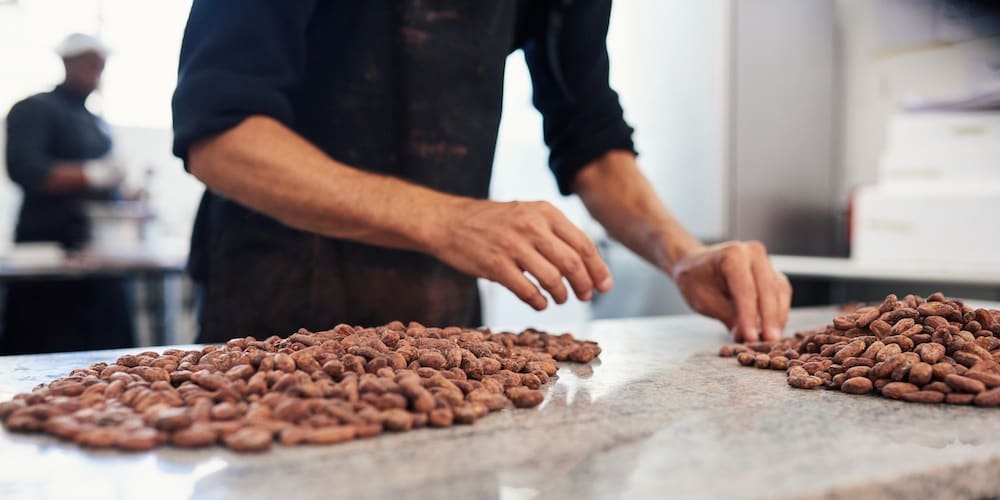What is bean-to-bar chocolate?
The importance of changing the cocoa market
In response to growing demand, the global cocoa market has gradually changed. From Africa to South America, the cultivation of cocoa beans has become the monopoly of large international corporations. Today, almost the entire market is held by only 10 companies! Over time, small producers have seen their work evolve, their incomes fall, and become dependent on the highly volatile cocoa market.
Beyond taking the monopoly, multinational companies also pose ethical and environmental problems: deforestation, intensive monocultures, destruction of biodiversity, use of pesticides, exploitation of growers, child labor, and slavery… It’s hard to imagine, when biting into a chocolate bar, the complex issues hidden behind cocoa cultivation.
The monopolization has also led to a standardization of cocoa tree varieties. Like coffee beans, cocoa beans come in a multitude of varieties: forastero, trinitario, criollo, amelonado… Today, forastero is the most cultivated variety and represents 90% of the world’s production on its own.
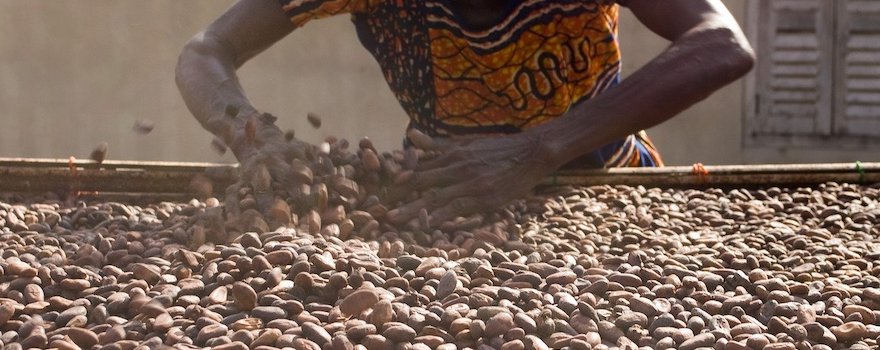
For higher yields, industries have also developed hybrid cocoa tree varieties. The CCN-51, for example, is preferred over local varieties as it produces up to four times more, although its beans are acidic and bitter. Today, native cocoa, adapted to local conditions, represents only 1% of the total cocoa production.
The loss of certain ancient varieties in favor of modern cultivars also leads to a standardization of chocolate taste. No aroma, color nuance, or particular texture stands out from industrial chocolate bars.
Bean-to-bar chocolate emerges in the 2000s
As you’ve likely gathered: it’s high time to change the cocoa market! A desire shared by producers, manufacturers, and chocolate enthusiasts alike. Since the 2000s, a movement has been gaining worldwide momentum: bean-to-bar chocolate.
Emerging in the United States, in San Francisco, bean-to-bar (literally “from bean to bar”) refers to chocolatiers who make their own chocolate and carry out the various stages of production themselves, from the cocoa beans to the final chocolate.
Also read From bean to bar: raw chocolate in Brooklyn
Where typically chocolatiers work with pre-made chocolate pastes, also called couverture chocolate, bean-to-bar chocolatiers process the beans themselves that they receive directly from local producers. They sort them, hull them, roast them, grind them on a millstone, mix them with cocoa butter… They thus master the entire production process, all done with passion and patience… This is a far cry from the industrial production of chocolate!
The players in bean-to-bar
The bean-to-bar movement encompasses many players in the cocoa industry. Generally, there is a distinction between local bean-to-bar chocolatiers and urban or “neo bean-to-bar” chocolatiers.
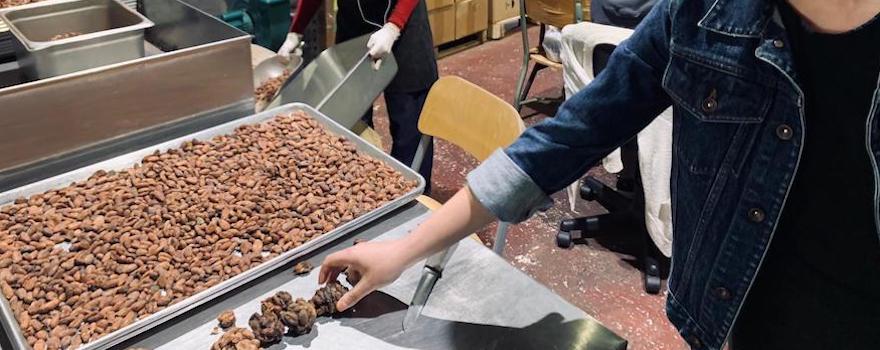
Local bean-to-bar refers to chocolateries located near production areas. Thus, they are mostly found in West Africa, Asia, and South America. Most work with local producers, and some even own their own cocoa plantations.
Urban bean-to-bar, on the other hand, is located away from production areas, notably in North America and Europe. These passionate chocolatiers, like Fine and Raw, carefully select the best cocoa beans and infuse their gustatory identity into the final chocolate.
Why choose bean-to-bar chocolate?
Bean-to-bar chocolate and industrial chocolate are so different that they cannot be compared. There are a thousand and one reasons to prefer bean-to-bar chocolate! Here are a few.
Unequaled flavors
With bean-to-bar chocolate, there is no longer uniformity of taste. This chocolate offers a wide range of subtle and varied aromas. Thus, depending on the cocoa varieties used, some bean-to-bar chocolates are more tangy while others are woody or fruity. The same goes for the texture, smoother or grainier, and for the color of the chocolate, which comes in different shades.

Promoting ancestral expertise
Choosing a bean-to-bar chocolate means promoting a unique and ancestral know-how. Although it really developed from the 17th century, the cultivation of cocoa was already practiced in the 2nd millennium BC! Cocoa is also an emblem of the Mayan and Aztec civilizations, which enjoyed the fruit of the cacao tree, used it as currency, and for ritual drinks.
Read also The day we harvested cacao in the Amazon
When you choose bean-to-bar chocolate, you highlight the work of both the chocolatier and the producers. From selecting the location of cacao trees to drying the beans, through the plantation of trees and harvesting pods, particularly in small agroforestry plantations, the producers are committed to cultivating cocoa according to the rules of the art and with passion.
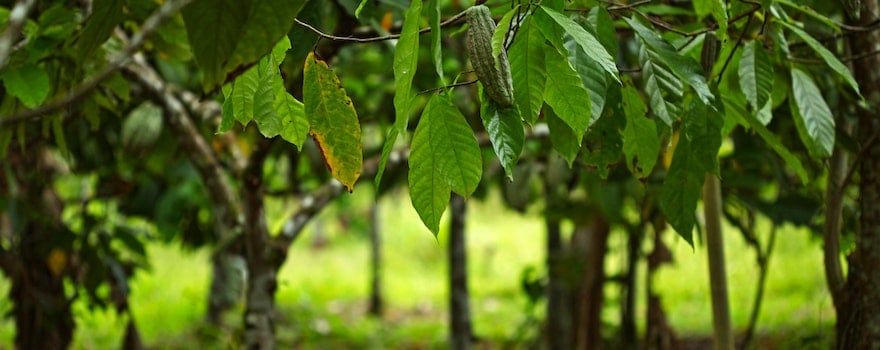
Financial support for local producers
According to the Ivorian Minister of Agriculture, of the $100 billion generated by the global chocolate industry, 6% is returned to the producing countries and only 2% to the growers. This situation does not allow them to have decent income and live from the fruit of their labor.
Like fair trade cocoa, bean-to-bar chocolate provides real financial support to local producers. Those involved in bean-to-bar make efforts to fairly remunerate the producers, much more than international companies (up to 40% more). This income allows them to purchase new machines and acquire more land to develop their plantations.
A chocolate better for health
Bean-to-bar chocolate is minimally processed, especially when it is raw. This “minimalist” manufacturing process ensures the natural composition of the beans is not altered and preserves their nutrients as much as possible.
Indeed, in addition to being a treat, chocolate is also good for health! It’s rich in antioxidant flavonoids, serotonin, a hormone associated with well-being, magnesium, and even has aphrodisiac properties.

How to choose your bean-to-bar chocolate?
Which cocoa varieties to choose?
If cocoa offers an incredible varietal richness, we advise you to choose the criollo variety, grown by the Mayas. Aromatic, fruity, and slightly bitter, it is today the most sought-after and appreciated variety among chocolate lovers. Criollo, which represents less than 5% of global production, is mainly cultivated in Central and South America.
In a few years, we might see bars based on Majambo beans (Theobroma bicolor), the cousin of cocoa, flourish. Perhaps the future white chocolate, which, remember, does not contain cocoa paste…
Why not raw chocolate?
Given the enthusiasm it generates, more and more chocolatiers are offering bean-to-bar chocolate. Choosing this type of chocolate is already a great idea to (re)discover the full gustatory richness of cocoa. Despite what some traditionalists might think, one can go even further by choosing both bean-to-bar AND raw chocolate.
Read also Everything to know about raw chocolate
Raw chocolate is made from beans roasted at low temperature. They thus retain all their nutrients and develop new aromas. Raw cacao is appreciated for its slightly strong and more vegetal and natural taste than classic cocoa.
Also prioritize bean-to-bar chocolate certified organic, made from untreated beans and fair trade certified.
Where to find it?
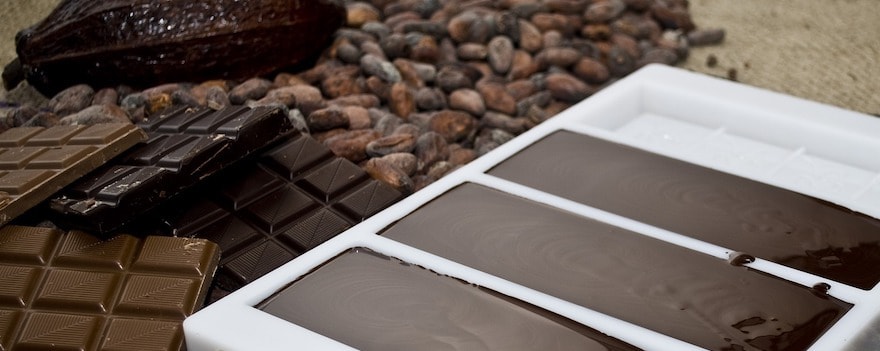
Out of its 4,000 chocolatiers, France counts only about thirty manufacturers offering bean-to-bar chocolate. Even fewer create chocolate that is both bean-to-bar and raw. But the movement is gaining momentum and becoming increasingly successful. It is possible to find bean-to-bar chocolate in organic stores, specialized shops, or online.


